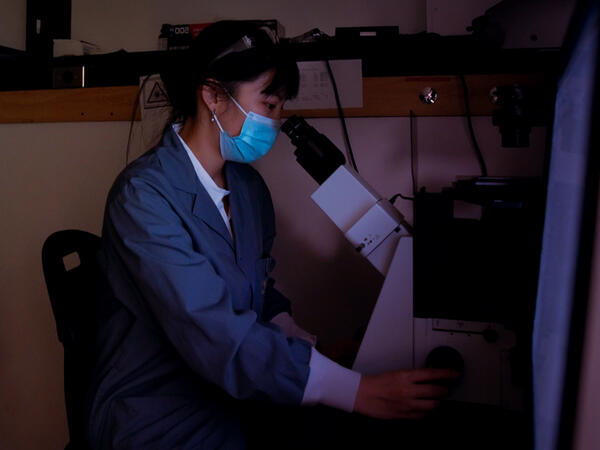
Gang
Zheng
101 College Street
TMDT 5-363
Toronto ON M5G 1L7
Canada
Area of Research
Gang Zheng’s research focuses on developing technology that can be translated into methods to diagnose and treat cancer more effectively. His research interests include nanomedicine, molecular imaging and phototherapy.
Research Challenge
Nanoparticles, which can be as small as one billionth of a metre, can be used for a variety of functions in medicine, such as molecular imaging and drug delivery. Subunits of nanoparticles with different functions can be combined into one structure so that one particle can have multiple functions. When a nanoparticle is made more complex with multiple subunits, it becomes more difficult to reproduce and scale up the production, and the particle’s behavior becomes more variable. As a result, very few nanotechnologies are able to meet FDA standards, despite their tremendous potential for diagnosing and treating diseases. How can these complex nanoparticles be produced to efficiently target specific cells, such as cancer cells, and consistently produce the intended effect?
Proposed Solution
The Zheng lab has developed a unique approach to nanomedicine – a “one-for-all” nanoparticle. Instead of combining many subunits to create a nanoparticle with multiple functions, they use a single molecule with multifunctional capabilities. This approach results in nanoparticle technologies that are reproducible, easier to scale up in production, and ultimately more likely to translate to clinical practice.
The Zheng lab uses naturally occurring porphyrin molecules, which can assemble into nanoparticles called porphysomes that can be used in different ways. The Zheng lab uses porphysomes to design multifunctional nanoparticles that are highly specific to cancer cells and can be used with light or fluorescence for imaging (e.g., photoacoustic imaging, photodynamic imaging, fluorescence imaging) or treatment (e.g., photothermotherapy), or loaded with cancer drugs to deliver. They also test the effectiveness of their technology using animal models of cancer.
Impact to date
The Zheng lab discovered porphysomes, the first organic nanoparticle with light-activated properties, which has allowed for the development of simple, multifunctional nanoparticles with high potential for clinical use. They have used porphysomes to develop new nanotechnologies that have the potential to greatly improve the way cancers are screened and treated. Zheng and his team are also pioneers in the field of target-activatable photodynamic therapy, creating light-activated drugs that are non-toxic and inert until they come in contact with cancer signatures. This technology is currently in preclinical stages of research for cancer therapy.

